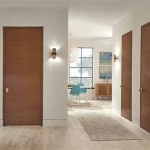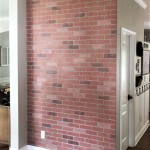Decoding the Elegance of a Traditional Interior Design Style Bedroom
The traditional interior design style evokes a sense of timeless elegance, comfort, and refinement. Characterized by its rich history and meticulous details, it often borrows inspiration from European aesthetics of the 18th and 19th centuries. When applied to a bedroom, this design philosophy creates a serene and luxurious space ideal for rest and relaxation. Understanding the key elements of traditional bedroom design, from its color palettes and furniture choices to its emphasis on textiles and accessories, is crucial for successfully implementing this style.
Emphasis on Symmetry and Order
One of the foundational aspects of traditional bedroom design lies in its commitment to symmetry and order. This principle manifests in various ways, from the arrangement of furniture to the placement of decorative items. The bed, typically the focal point of the room, is often positioned centrally against a wall. Nightstands or bedside tables flank the bed on either side, creating a mirrored effect. Lamps, table décor, and even the artwork above the bed often adhere to this symmetrical arrangement. The overall effect is a sense of balance and harmony, contributing to a calming atmosphere.
Furthermore, the concept of order extends beyond just the furniture placement. Consider the patterns used in the room. Matching drapes, decorative pillows, and bedding contribute to a cohesive and well-coordinated look. The visual consistency minimizes distractions and enhances the sense of tranquility. Even the layout of a traditional bedroom often follows a pattern, with clear pathways and defined zones for sleeping, dressing, and relaxing.
The importance of symmetry and order is not merely aesthetic; it also contributes to the psychological comfort of the space. A well-organized and balanced room can reduce stress and promote a sense of well-being. The predictability and familiarity inherent in symmetrical designs offer a sense of reassurance and stability, making it ideally suited for a bedroom environment.
The Role of Rich Materials and Textures
The selection of materials and textures plays a vital role in establishing the luxurious ambiance of a traditional bedroom. Natural materials such as wood, linen, silk, and wool are favored for their inherent beauty and tactile qualities. The bed frame, for instance, might be crafted from dark, richly stained wood, perhaps with carved details or an upholstered headboard in a sumptuous velvet or brocade fabric.
Linens are another crucial element. High-quality cotton sheets, layered with a silk or velvet quilt or comforter, create a comfortable and visually appealing bed ensemble. Decorative pillows in a variety of shapes and sizes, often adorned with intricate embroidery or tassels, add further texture and depth. Window treatments typically consist of heavy drapes made from luxurious fabrics like silk or velvet, often paired with sheer under-curtains for added privacy and light control.
Wall coverings also contribute significantly to the overall texture of the room. Wallpaper with subtle patterns or textured paint finishes can add visual interest without overwhelming the space. Alternatively, wood paneling or wainscoting can create a more formal and traditional look. Rugs, typically made from wool or silk, provide warmth and cushioning underfoot, while also adding another layer of texture to the room. These materials are carefully chosen not just for their aesthetic appeal, but also for their durability and comfort. They contribute to a sense of lasting quality and refinement, characteristic of traditional design.
Color Palettes and Decorative Details
Traditional bedrooms often employ a sophisticated and muted color palette. Rich, warm tones like creams, beiges, golds, and browns are commonly used as the base colors, providing a neutral backdrop for the introduction of accent colors. These accent colors might include deep reds, greens, blues, or purples, often used sparingly in textiles, artwork, or decorative accessories. The goal is to create a sense of understated elegance, avoiding overly bright or flashy colors.
Decorative details are equally important in achieving the traditional aesthetic. Ornate mirrors, framed artwork, and antique-inspired lamps are frequently used to add character and personality to the room. Crown molding, wainscoting, and elaborate trim work are common architectural features that enhance the sense of formality. Fireplaces, if present, are often surrounded by ornate mantels and decorated with candles or decorative objects.
Artwork typically consists of landscapes, portraits, or still-life paintings in classic styles. Picture frames are often made from ornate gold or silver, adding a touch of luxury to the display. Lighting fixtures, such as chandeliers, sconces, and table lamps, are chosen for their elegant designs and their ability to create a warm and inviting ambiance. These details work together to create a cohesive and visually rich environment that reflects the timeless elegance of the traditional style.
Accessories such as porcelain vases, silver picture frames, and antique clocks also contribute to the traditional style. Plants can also contribute to the overall aesthetic, especially if they are placed in ornate planters. The objective is to add layers of detail without creating a cluttered or overwhelming space.
When considering specific design elements, attention should be paid to the specific historical period one is trying to emulate. For example, a bedroom inspired by the Victorian era will have different accessories and architectural styles than one inspired by the French country style. Researching the specific historical periods will help to ensure that all the elements in the traditional bedroom harmonize.
Finally, personalization is key. While adhering to the general principles of traditional design, it's important to incorporate elements that reflect the homeowner's personal taste and preferences. Whether it's a cherished antique, a favorite piece of artwork, or a particular color scheme, these individual touches will help to create a space that is both elegant and uniquely personal.
In summary, crafting a traditional bedroom is a deliberate process involving careful consideration of several key elements. Symmetry and order are paramount, creating a sense of balance and harmony. Rich materials and textures add a layer of luxury and comfort. Sophisticated color palettes and decorative details contribute to the overall sense of timeless elegance. When these elements are combined effectively, the result is a bedroom that is both beautiful and functional, offering a serene and inviting retreat for rest and relaxation.

Traditional Interior Design 7 Best Tips To Create A Beautiful Room Decorilla

How To Quickly Update A Traditional Interior Design Home My Decorating Tips

Traditional Master Bedroom Design With A Modern Twist Style By Mimi G

Timeless Charm Traditional Bedroom Design Ideas

Traditional Interior Design Defined And How To Master It Décor Aid

Timeless Charm Traditional Bedroom Design Ideas

Traditional Master Bedroom Design With A Modern Twist Style By Mimi G

Traditional Interior Design Our Complete Guide

10 Aesthetic Bedroom Ideas For A Minimalist Trendy
:max_bytes(150000):strip_icc()/final-w.-large-mirror-bb2c331d25e743968d5ec1fd926adf55.jpg?strip=all)
25 Vintage Bedrooms That Prove Decor S Worth
Related Posts








